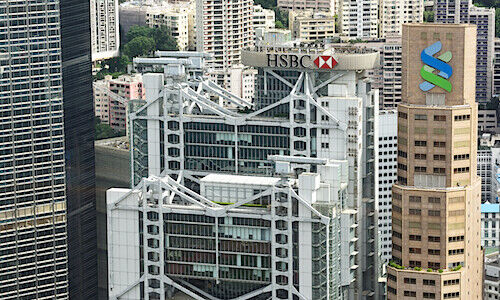Cost-Cutting Drive: HSBC Versus StanChart
HSBC has announced its plan to cut expenses last week. Standard Chartered is one year into its own program. Both Asia-focused British rivals have earmarked 2026 as the deadline for this cost reduction cycle.
Last week, HSBC unveiled its highly anticipated plan to reduce $1.5 billion in costs by 2026, including $300 million in 2025. The cuts will be mainly achieved by decreasing staff expenses by 8 percent with a focus on more senior roles and the UK head office. Ultimately, the goal will help the bank achieve its target of mid-teens return on tangible equity (RoTE) for each year in 2025, 2026 and 2027.
At rival Standard Chartered, a similar goal was announced in February 2024 with the launch of a three-year «Fit for Growth» program to deliver $1.5 billion of expenses. By 2026, the bank aims for costs to be below $12.3 billion and RoTE to approach 13 percent.
Similar Focus, Different Path
While the two banks’ goals are very alike in terms of the financial targets, deadline and the focus on simplifying their businesses, they will be taking different paths.
After cutting expenses of around $200 million in 2024 by mobilizing over 200 projects with initiatives on sustainable structural improvements, Standard Chartered will ramp up in 2025 with the majority of its $1.5 billion in savings to be achieved this year. The program is expected to cost $1.5 billion with 60 percent to be incurred also in 2025.
HSBC’s program is one year shorter and more expensive with $1.8 billion of expenses expected to be incurred from severance and other up-front costs. The majority of savings will be achieved in 2026 with $300 million expected in 2025.
Profit Impact
Ten months into its three-year program, Standard Chartered has maintained bottom line growth. Its profit increased 20 percent year-on-year to $6.8 billion with income rising 13 percent to a record $19.7 billion. Time will tell if this momentum can be maintained in the remaining two years of its cost-cutting drive.
At HSBC, some believe it will take an early hit. According to Morningstar senior equity analyst Michael Makdad, the bank is expected to report slightly lower profit in 2025 before returning to growth in 2026 with the cost reduction to boost net profit by about 4 percent in the future. In 2024, it posted a pre-tax profit of $32.2 billion, up 6.6 percent.
«The cost-cutting is positive, but we see limited room for top-line growth in the next few years,» Makdad said in a note. «For HSBC to achieve a substantial premium to book value, we believe further structural changes would be needed. However, given the complexity of HSBC's operations, we think it’s prudent for management to focus on medium-term efficiency gains rather than more disruptive overhauls.»



























